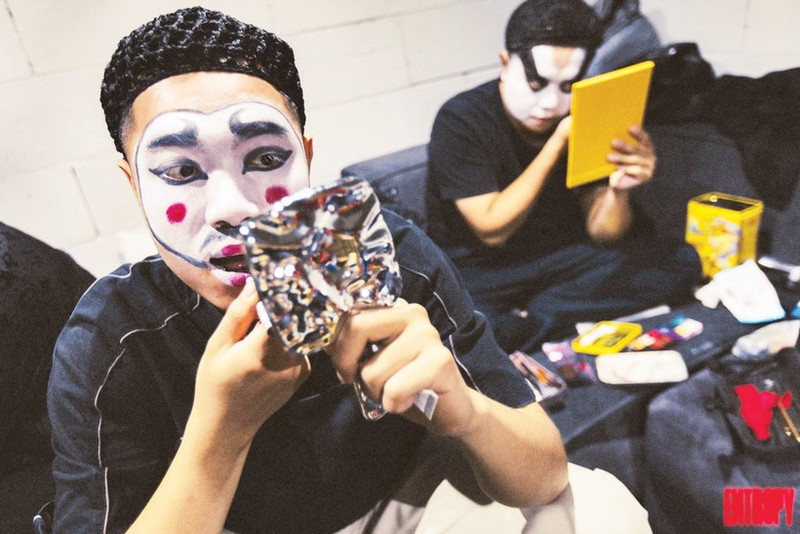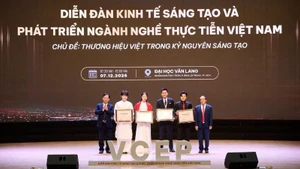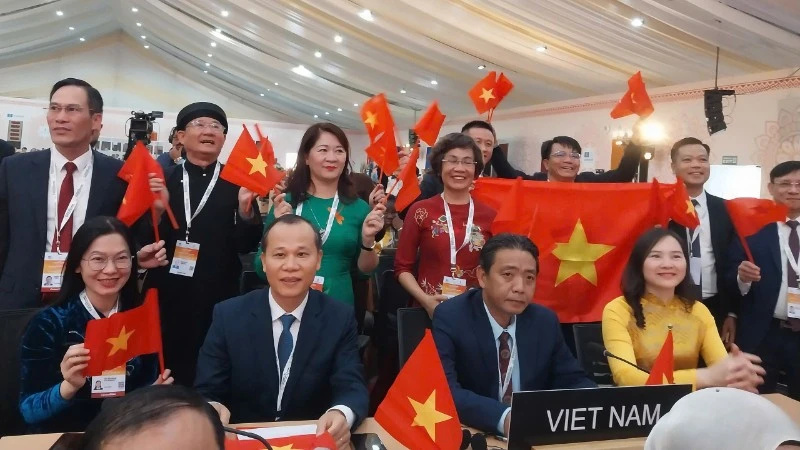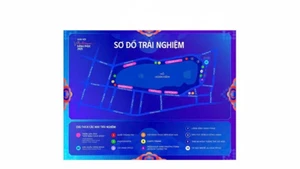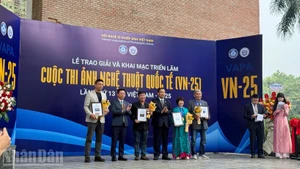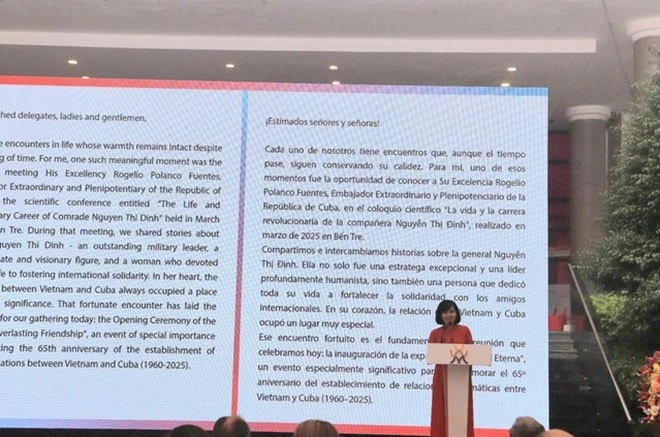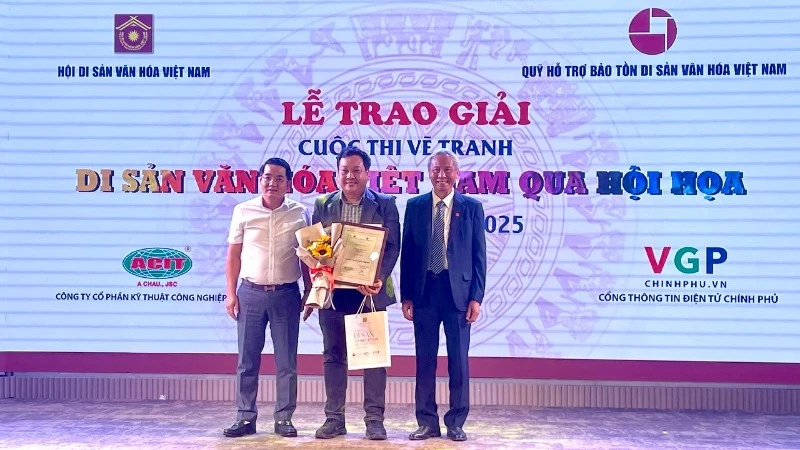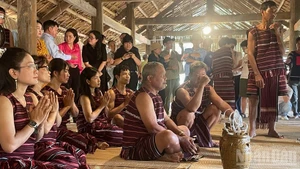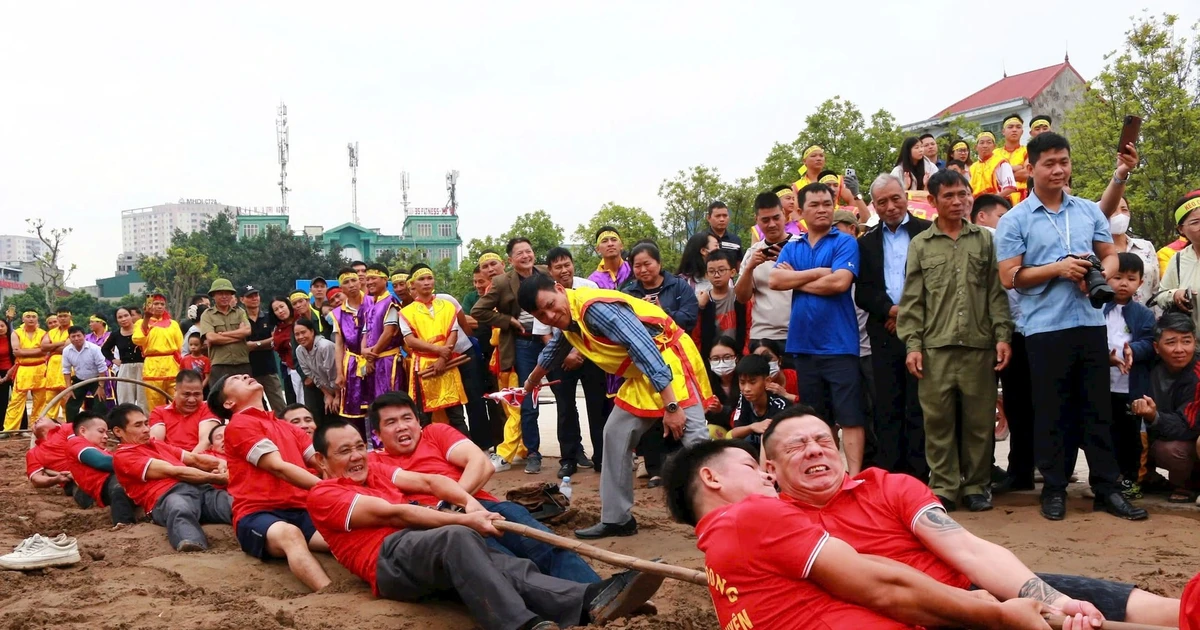Modernising delivery of Tuong
For centuries, Tuong has told epic historical tales, captivating audiences with vibrant costumes, stylised singing, and dramatic gestures. However, in an era dominated by contemporary music, digital platforms like TikTok and Facebook, and fast-paced entertainment, stage arts in general—and Tuong in particular—have become increasingly unfamiliar to the youth. Acknowledging the looming threat of cultural fading, artists, music producers, and young creatives have devised innovative ways to reintroduce Tuong to modern life.
Ngoc Anh, a member of the project “Tuong in My Voice”, recalled: “One time, our group watched a Tuong performance at the Hong Ha Theatre in Ha Noi. Initially, it was just out of curiosity, but as we sat in the audience, we had so many questions: why is the make-up so heavy? Why the masks on top of the make-up? Why such stylised gestures? We felt Tuong was so beautiful and meaningful—why did it feel so distant from people? That’s how we came up with the idea for a media project on Tuong, especially for young audiences. That’s how our TikTok channel “Tuong in My Voice” was born.”
Alongside this channel, a host of short videos summarising plots, introducing characters and costumes—with a humorous twist—on platforms like “Heritage Journey” and “Old Tuong, New Shades” have attracted thousands of views. A standout example is the electronic music event “Ai Long Dia #3: Tuong meets Techno” organised by the young Entropy Team, directed by Meritorious Artist Tran Van Long.
My Nhat, head of communications at Entropy, shared: “Ai Long Dia was born from the concerns of young people in our group: why is traditional art often seen as alien to youth? Why is nightlife—a space brimming with entertainment potential—plagued by so many misconceptions, when in fact, it harbours valuable and developing cultural dimensions?”
And so, on a weekend evening at Entropy Bar on Dao Duy Tu Street, Ha Noi, the sounds of drums and oboes rang out, as the classic Tuong excerpt “On Dinh Chem Ta” (from the play “Son Hau”) was performed to thunderous applause from a young crowd.
Reflecting on the night, Nguyen Thuy Duong, owner of the TikTok channel “In Ha Noi”, commented: “As a fan of traditional cultural arts and a folk dance performer myself, hearing the sounds of oboes, drums, and traditional instruments blend with contemporary music was truly satisfying.” Likewise, Nguyen My Huyen from Ba Dinh, Ha Noi, admitted it was the first time she had seen traditional arts brought into a bar setting. “I was a bit sceptical at first,” she said, “but it was genuinely captivating—both to the eyes and the ears.”
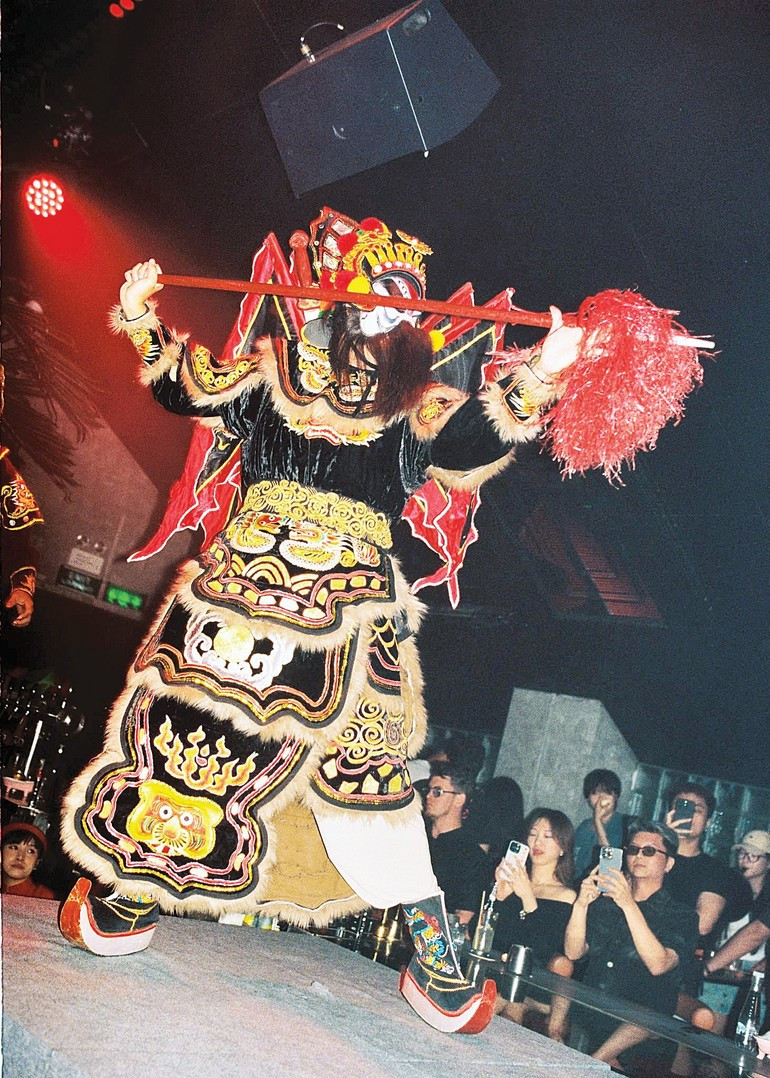
From distance to harmony
Initiatives like Ai Long Dia prove that Tuong — and other traditional Vietnamese instruments and art forms — can indeed blend with electronic music and thrive in club settings. These fusions spark curiosity and ignite a renewed sense of cultural pride among young audiences.
This is not the first time Entropy has brought traditional cultural activities into the nightlife space. Earlier events “Ai Long Dia #1 and #2” featured electronic music blended with Vietnamese folk instruments and Central Highlands gong heritage respectively, the latter marking 20 years of UNESCO recognition. Both events drew hundreds of young attendees.
Several bars — such as Eyeconic, MOA, and Aplus — have also introduced traditional instruments like the bamboo flute or monochord into their line-ups, creating novel and culturally rich experiences. Nguyen Ha Anh, a traditional instrument musician, shared: “I’ve performed twice in bars—once with the bamboo flute, and once with the monochord and drums. Honestly, I was surprised by the response. As a young person who plays traditional instruments, I feel proud to contribute to bringing our folk music closer to the public. I hope more forms of traditional art, not just Tuong, will be renewed and break out of conventional boundaries.”
“The Viet Nam Tuong Theatre is also actively reaching out to young people,” said Meritorious Artist Tran Van Long. “Each year, we perform 50–60 shows at schools, have children’s performances at the Hong Ha Theatre, and now we’re exploring collaborations with electronic music. It’s a good way to reach the youth.”
“When the Entropy team approached me, I was hesitant at first—was that environment or genre even suitable for Tuong? But once we got started, it actually harmonised quite well. Electronic music can elevate climactic moments in a different way. It didn’t take long to get used to; we only needed two or three sessions to work together.”
Challenges remain…
The effort to revitalise Tuong inevitably faces challenges. Merging it with genres like techno or hip-hop risks overshadowing the refined essence of Tuong — from its vocal techniques and acting style to its narrative depth—potentially leading young audiences to focus on entertainment alone and overlook its cultural core. Bringing Tuong into nightlife spaces has also sparked debate, with some traditional arts enthusiasts fearing a loss of solemnity.
Nguyen Thuy Duong reflected: “I’d watched On Dinh Chem Ta at the Hong Ha Theatre before, so I could understand the scene performed at Entropy. But for first-time viewers, it might be hard to follow.”
Tran Van Long added: “Tuong is a harmonious blend of folk elements like performance games and verse-based folk poetry. Its lyrics are typically structured in four- to eight-syllable couplets with varied singing styles. As such, electronic music venues cannot convey the full depth of Tuong’s messages. What they can do is serve as a ‘bridge’—an invitation to discover Tuong and seek its original values.”
There’s no denying the effort young people are putting in to bring traditional arts to the public. But to ensure Tuong truly lives within modern life, we must go beyond a few viral performances or social media trends. A long-term strategy is needed. More educational programmes, interactive workshops, and participatory events must be developed—not only for audiences to watch but to understand and co-create. Initiatives like Entropy’s should be replicated, combining modern technology to create immersive cultural experiences. Above all, respecting the essence of Tuong and other heritage forms must remain a priority to prevent careless modernisation.
